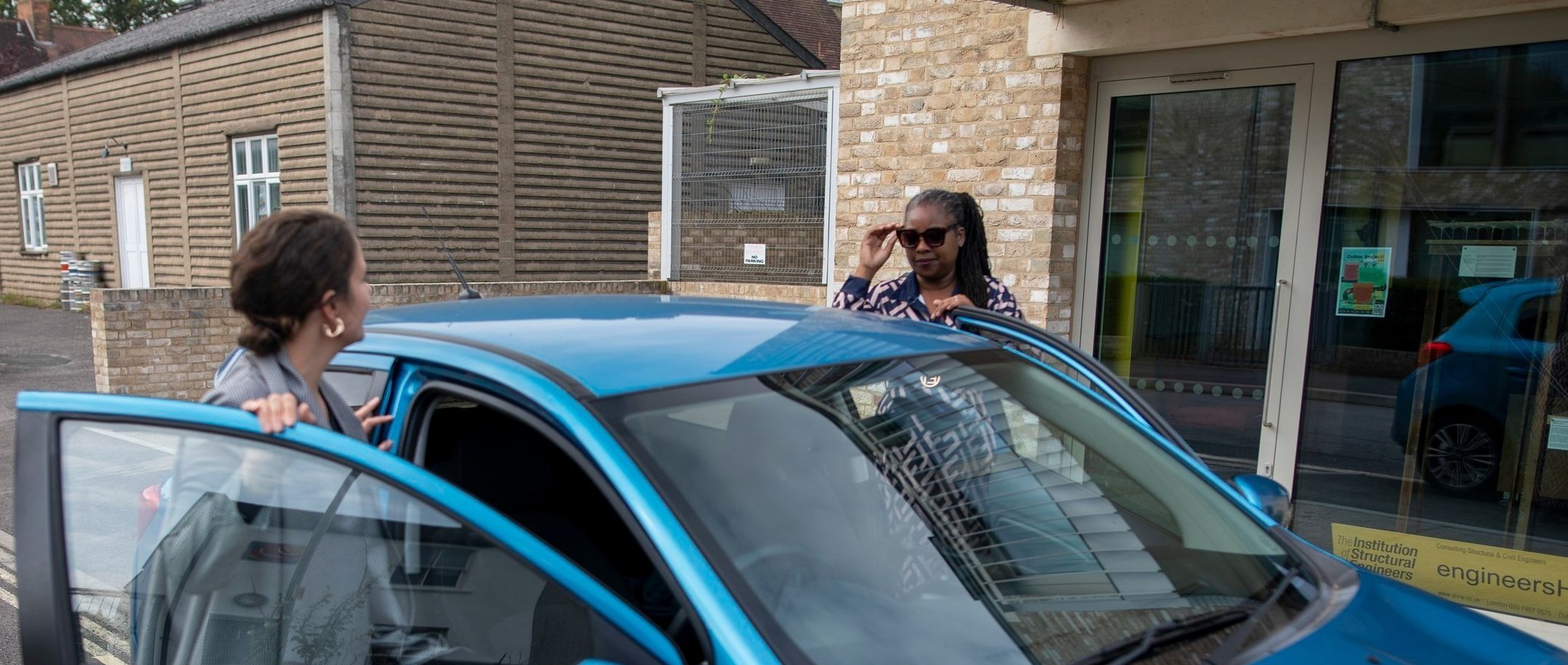
Lift Sharing
Since many people will be looking for different commuting options when the traffic filters come in, this may be a good opportunity to encourage lift sharing. Lift sharing could involve colleagues driving into work together, or employees sharing a ride with people outside the workplace. It results in less driving for everyone involved, and fewer parking spaces needed at your workplace. While it is illegal to profit from a lift share scheme, drivers may share journey costs like petrol and parking with passengers.
How to start a lift share program
There are formal tools available to help set up a lift share network at your workplace, such as Liftshare For Work and Kinto, which help employees find other interested people and arrange a lift. These need to be paid for by the employer, and come with a full service such as being branded for your org, sign up security features (so it is private for just your organisation), and tonnes of data and insight so you can see how many journeys are swapped and the CO2e saved. Plus, employees can be rewarded through various points systems.
A quick, simple and free alternative is to encourage employees to use the public Liftshare app - this is completely free for both the individual and the employer. The app can be used to arrange both one-off or regular rides. It potentially widens the pool of people who are able to share, but it is a public app so it's not guaranteed to be colleagues who ride together, and no insights or data will be available to the organisation.
Lift shares can also be set up more informally, such as through a WhatsApp group for geographical areas - remember people don't have to live near each other, they just need to be en route! If your workplace is on the small side, you may want to consider creating a shared system with other nearby businesses to expand your pool of possible users.
As an employer, you will need to consider which option is best for your workplace: paying for an app or software to set up a lift share network for your staff, doing the work internally to informally set up lift shares at your organisation, or simply promoting the public Liftshare app to your employees.
Basic things needed to set up a lift share program
A way for members to advertise which journeys they are taking, and for other members to indicate their interest in sharing the journey. This could be a public notice board, an online calendar, or a group on a messaging platform like WhatsApp.
Alternatively, a coordinator can use postcode mapping to identify interested members living near each other and provide a secure way for them to be put in contact.
In either case, a way for people to turn down a match or lift share request for any reason should be provided.
How to encourage lift sharing
Designate convenient parking places to be used only by lift sharers.
Exempt lift sharers from certain on-site parking restrictions or charges.
Make sure shifts end on time so people can catch their lifts home.
Host lift sharing events where people can meet and socialise with others who are interested, ahead of time, and in doing so allay some of the concerns about sharing rides with strangers or not liking their sharer.
Give incentives such as free breakfast.
Communicate the benefits to all staff.
Guaranteeing a ride home in the rare case that a ride falls through may help alleviate worries employees have about being stranded.
See the Department for Transport’s toolkit on lift sharing for further advice.
Examples
Oxford University Hospitals encourages its employees to use the Liftshare website, pitching it as a way to save money on petrol and parking permit costs. Lift sharers at OUH Trust also get 30% off parking permits, and the hospital will pay for emergency taxis for a lift sharer if their lift needs to leave unexpectedly.
Milton Park uses KINTO Join to manage lift sharing. Through a Bluetooth connection from both the driver’s and passengers’ phones, the Kinto app can trigger a car park barrier to lift to give preferential parking to lift sharers. It can also be linked to discount vouchers and other rewards.
Updated November 2025
